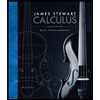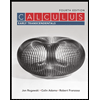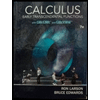Consider an object moving along a line with the following velocity and initial position. vit)12-3t2 on [0,3]; s(D)-4 Determine the position function for t 20 using both the antiderivative method and the Fundamental Theorem of Calculus. Check for agreement between the two methods. To determine the position function for t 0 using the antiderivative method, first determine how the velocity function and the position function are related. Choose the correct answer below. OA. The velocity function is the antiderivative of the absolute value of the position funetiom. OB The pusTon function is the derivative of the velocity function. C. The position function is the absolute value of the antiderivative of the verocity Tunction. The pusitien function is he antiderivative of the velncity function. Which equation below will correcthy give the position function according to the Fundamental Theorem of Calculus? O B. vit)dt A. s(t) s(0) + n O C. SUs(t) v(x)dx Sttj= s(0)+ Determine the position function for t20 using both methods. Select the correct choice below and fill in the answer box(es) to complete your choice. A. The same function is obtained using each method. The position function is s(t) OrBDifferent functions are obtained using each method. The position function obtained using the antiderivative method is s(t) and the position function obtained using the Fundamental Theorem of Calculus is s(t)
Consider an object moving along a line with the following velocity and initial position. vit)12-3t2 on [0,3]; s(D)-4 Determine the position function for t 20 using both the antiderivative method and the Fundamental Theorem of Calculus. Check for agreement between the two methods. To determine the position function for t 0 using the antiderivative method, first determine how the velocity function and the position function are related. Choose the correct answer below. OA. The velocity function is the antiderivative of the absolute value of the position funetiom. OB The pusTon function is the derivative of the velocity function. C. The position function is the absolute value of the antiderivative of the verocity Tunction. The pusitien function is he antiderivative of the velncity function. Which equation below will correcthy give the position function according to the Fundamental Theorem of Calculus? O B. vit)dt A. s(t) s(0) + n O C. SUs(t) v(x)dx Sttj= s(0)+ Determine the position function for t20 using both methods. Select the correct choice below and fill in the answer box(es) to complete your choice. A. The same function is obtained using each method. The position function is s(t) OrBDifferent functions are obtained using each method. The position function obtained using the antiderivative method is s(t) and the position function obtained using the Fundamental Theorem of Calculus is s(t)
Calculus: Early Transcendentals
8th Edition
ISBN:9781285741550
Author:James Stewart
Publisher:James Stewart
Chapter1: Functions And Models
Section: Chapter Questions
Problem 1RCC: (a) What is a function? What are its domain and range? (b) What is the graph of a function? (c) How...
Related questions
Topic Video
Question
A) and B) please!
I keep trying hahah.
![Consider an object moving along a line with the following velocity and initial position.
vit)12-3t2 on [0,3]; s(D)-4
Determine the position function for t 20 using both the antiderivative method and the Fundamental Theorem of Calculus. Check for agreement between the two methods.
To determine the position function for t 0 using the antiderivative method, first determine how the velocity function and the position function are related. Choose the correct answer below.
OA. The velocity function is the antiderivative of the absolute value of the position funetiom.
OB The pusTon function is the derivative of the velocity function.
C. The position function is the absolute value of the antiderivative of the verocity Tunction.
The pusitien function is he antiderivative of the velncity function.
Which equation below will correcthy give the position function according to the Fundamental Theorem of Calculus?
O B. vit)dt
A. s(t) s(0)
+
n
O C. SUs(t) v(x)dx
Sttj= s(0)+
Determine the position function for t20 using both methods. Select the correct choice below and fill in the answer box(es) to complete your choice.
A. The same function is obtained using each method. The position function is s(t)
OrBDifferent functions are obtained using each method. The position function obtained using the antiderivative method is s(t)
and the position function obtained using the Fundamental Theorem of Calculus is s(t)](/v2/_next/image?url=https%3A%2F%2Fcontent.bartleby.com%2Fqna-images%2Fquestion%2Ff3dfe0fe-f0ce-410c-bdfb-d6df4ed577de%2F43e085eb-63c8-46f4-a4d4-9672817fbf65%2Fyyt4oga.png&w=3840&q=75)
Transcribed Image Text:Consider an object moving along a line with the following velocity and initial position.
vit)12-3t2 on [0,3]; s(D)-4
Determine the position function for t 20 using both the antiderivative method and the Fundamental Theorem of Calculus. Check for agreement between the two methods.
To determine the position function for t 0 using the antiderivative method, first determine how the velocity function and the position function are related. Choose the correct answer below.
OA. The velocity function is the antiderivative of the absolute value of the position funetiom.
OB The pusTon function is the derivative of the velocity function.
C. The position function is the absolute value of the antiderivative of the verocity Tunction.
The pusitien function is he antiderivative of the velncity function.
Which equation below will correcthy give the position function according to the Fundamental Theorem of Calculus?
O B. vit)dt
A. s(t) s(0)
+
n
O C. SUs(t) v(x)dx
Sttj= s(0)+
Determine the position function for t20 using both methods. Select the correct choice below and fill in the answer box(es) to complete your choice.
A. The same function is obtained using each method. The position function is s(t)
OrBDifferent functions are obtained using each method. The position function obtained using the antiderivative method is s(t)
and the position function obtained using the Fundamental Theorem of Calculus is s(t)
Expert Solution
This question has been solved!
Explore an expertly crafted, step-by-step solution for a thorough understanding of key concepts.
This is a popular solution!
Trending now
This is a popular solution!
Step by step
Solved in 7 steps with 5 images

Knowledge Booster
Learn more about
Need a deep-dive on the concept behind this application? Look no further. Learn more about this topic, calculus and related others by exploring similar questions and additional content below.Recommended textbooks for you

Calculus: Early Transcendentals
Calculus
ISBN:
9781285741550
Author:
James Stewart
Publisher:
Cengage Learning

Thomas' Calculus (14th Edition)
Calculus
ISBN:
9780134438986
Author:
Joel R. Hass, Christopher E. Heil, Maurice D. Weir
Publisher:
PEARSON

Calculus: Early Transcendentals (3rd Edition)
Calculus
ISBN:
9780134763644
Author:
William L. Briggs, Lyle Cochran, Bernard Gillett, Eric Schulz
Publisher:
PEARSON

Calculus: Early Transcendentals
Calculus
ISBN:
9781285741550
Author:
James Stewart
Publisher:
Cengage Learning

Thomas' Calculus (14th Edition)
Calculus
ISBN:
9780134438986
Author:
Joel R. Hass, Christopher E. Heil, Maurice D. Weir
Publisher:
PEARSON

Calculus: Early Transcendentals (3rd Edition)
Calculus
ISBN:
9780134763644
Author:
William L. Briggs, Lyle Cochran, Bernard Gillett, Eric Schulz
Publisher:
PEARSON

Calculus: Early Transcendentals
Calculus
ISBN:
9781319050740
Author:
Jon Rogawski, Colin Adams, Robert Franzosa
Publisher:
W. H. Freeman


Calculus: Early Transcendental Functions
Calculus
ISBN:
9781337552516
Author:
Ron Larson, Bruce H. Edwards
Publisher:
Cengage Learning